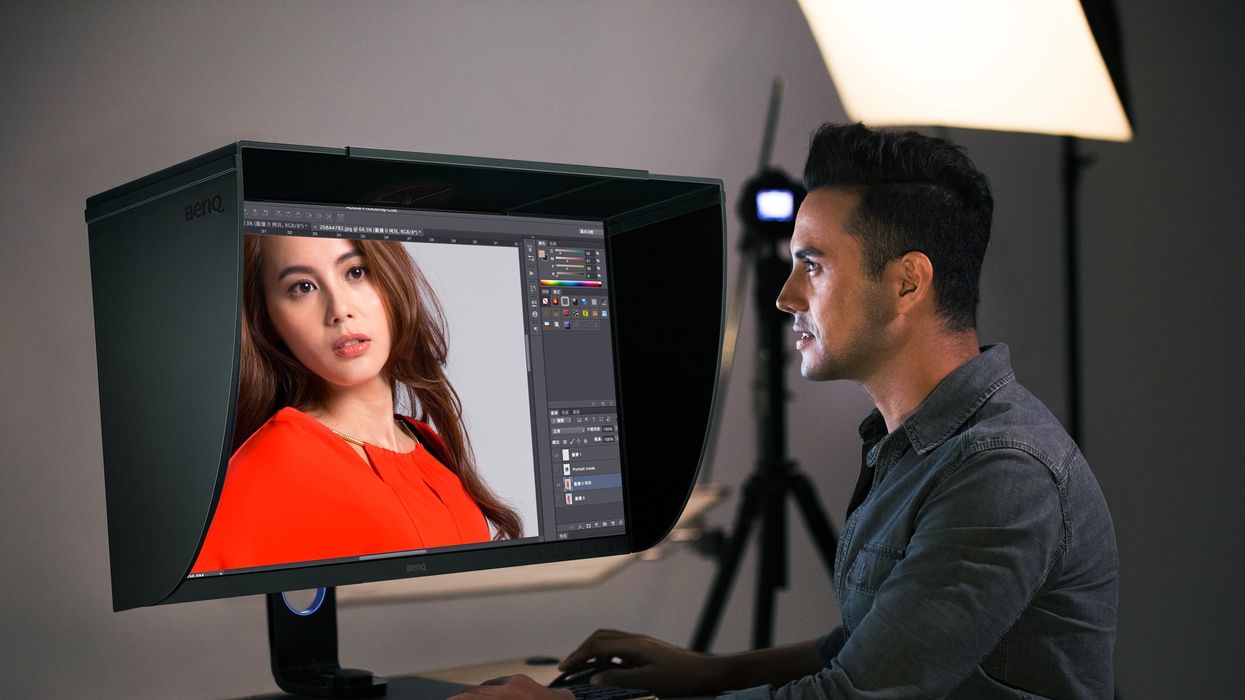
Most filmmakers would like access to an affordable color-accurate monitor, with the ideal price point somewhere under $1K. While the new SW271 4K color management monitor from BenQ doesn't quite hit that target, coming in at $1,099, it offers a compelling combination for full Rec. 709 gamut coverage, native UHD resolution, and 27" size, all for a price that puts it in range for the indie filmmaker to use at home.

BenQ is clearly aiming at post production with this monitor, and it likely doesn't have the robust build quality you might traditionally hope for in a field monitor, though it does come with a shade that could block on-set lights if it does go in the field. However, as an affordable post grading monitor, the SW271 has a lot going for it. In addition to the full coverage for Rec. 709 and a native 10-bit panel, the SW271 also offers a hardware calibration mode using internal software. This means instead of needing to purchase something like Calman or Lightspace, users who own a probe can simply plug their probe into the monitor and calibrate it for accuracy.
The SW271 supports the popular X-Rite i1Display Pro, also supported by many other calibration setups and competitors like SmallHD, meaning you aren't locking yourself into only BenQ monitors if you go with that probe. Currently, BenQ claims that the SW271 can get under DlogE 2 in terms of accuracy for sRGB mode, with no mention of accuracy for Rec. 709, which is worrying. Anything under 2 is considered "visually indistinguishable from perfect," so hopefully the identical sRGB and Rec. 709 primaries means that this will also work for Rec. 709 calibration for video work.

The "Technicolor" branding is likely to be more about the marketing hype rather than an actual statement that Technicolor is heavily using these monitors. The same way the "Leica" or "Zeiss" branding on your $1,500 camcorder doesn't mean quite as much as buying a full on Zeiss Master Prime Lens. Currently, monitor manufacturers are attempting to develop brands that bring a legacy halo to their offering, with HP pushing Dreamcolor, Razer purchasing THX and Gigabyte putting the X-rite/Pantone brand on laptops. However, Technicolor putting its name on BenQ's SW271 does hopefully mean that Technicolor has done internal testing of the monitor and that the SW271 can be used for motion picture work (though it seems likely in actual Technicolor facilities, you are more likely to see a Dolby, Flanders, or Sony monitor in a grading suite).

A feature that could potentially be useful to filmmakers, but would need extensive testing first, is the dual gamut mode. Put in two inputs and you can play them in separate gamuts. Using an HDMI splitter, you could then run your video signal in and preview it both in P3 and Rec. 709. Though one of the HDMI signals would need a Rec. 709 to P3 converter in line, this might be a good way to ensure VFX and coloring pipelines destined for both theatrical and home release workflows are able to preview both formats as they go along.

Speaking of P3, the SW271 monitor only covers 93% of the theatrical DCI-P3 space, and while that initially might seem disappointing, this should still be exceptionally useful for users delivering P3 projects. If you are delivering P3, you really need to do a final check in a calibrated theater, but that gets pricy, so working in P3 on something like the SW271 for a few weeks to prepare for a few days in a theater could potentially save an indie production a tremendous amount of money.

A final detail we loved about the SW271, when we saw it in person back at Photo Plus earlier this year, is the puck menu system built into the stand. It's a small feature, but we appreciate that large, easy-to-access buttons are built into the monitor to make it easier to use. If you are going to be calibrating frequently, switching between 709 and P3, or switching between sources, searching constantly on the bottom of the monitor for the right buttons can get tiresome. Having it all right there in a puck on the base is a considerate design feature that should make users' lives easier.
For more info, check out the BenQ site.
- 100% Full Rec. 709 and sRGB coverage
- 99% Adobe RGB Color Space With IPS technology
- 93% of DCI-P3 color gamut
- 350 nits brightness
- HDR10 compatible
- 27-inch 4K UHD resolution
- Hardware calibration with Palette Master Element Software
- USB-C for transmitting data and video signal with one cable
- 2x HDMI connectors










![Ethos, Pathos, Logos: 20 Effective Ways to Advertise [Infographic]](https://nofilmschool.com/media-library/ethos-pathos-logos-20-effective-ways-to-advertise-infographic.jpg?id=34064614&width=600&height=600&quality=90&coordinates=560%2C0%2C0%2C0)

